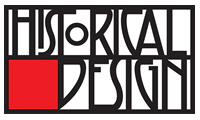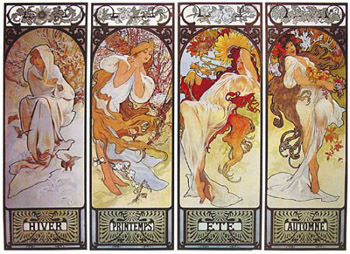Product Description
Firmin-Marcelin Michelet French Art Nouveau “Four Seasons” sculpted vase c. 1900


FIRMIN-MARCELIN MICHELET Sculptor (1875-1951) France
GENTIL ET BOURDET [pottery]
“Four Seasons” vase c. 1900
Glazed stoneware in a cream color with tan and light brown highlights molded with four female profiles and corresponding floral branches below representing the “Four Seasons” of the year
Marks: F. Michelet (underglaze), Gentil et Bourdet Architectes Ceramistes
Another example of this vase is in the collection of the Brighton Museum Brighton, England
Exhibited: French Art Nouveau from English Collections, City of Bristol Museum and Art Gallery, 1977, Cat. No. B7.
Illustrated: Art Nouveau, Art Deco and the Thirties; The Ceramic, Glass and Metalwork Collections at Brighton Museum (Brighton: The Royal Pavillion, 1986)cat. no. 41, p. 22.
For more information on Firmin-Marcellin Michelet see: Étains 1900:
200 Sculptures de la Belle Époque, Philippe Dahhan (Paris: Les Éditions de l’Amateur, 2000), p. 274.
H: 13 1/2″ x Dia: 7 1/4″
Price: $7,500
Firmin-Marcelin Michelet French Art Nouveau “Four Seasons” sculpted vase c. 1900
CHARLES GREBER France
“Chameleons” vase c. 1905
Stoneware with crystalline-structure glaze in creamy white beige and blue tones with floral motifs and three full scale chameleons perched on the edge.
Marks: C. Greber (incised script)
H: 6 1/4″ x Dia: 7 1/2″
The potter-sculptor has awakened Darwin’s theory of evolution with this vase and has furthermore humanized these reptiles with an amusing sense of cameraderie.
Silver hand finished and repoussed in the form of a staghorn beetle with horns encircling the round magnifying glass, gold details
Signed: L. GAILLARD (engraved) on lower right leg, head of Minerva (950/1000 pure silver)
The staghorn beetle was a favorite form for Gaillard and the inspiration for many examples of his work including jewelry, vases and this magnifying glass. A variant model in cast bronze can be seen in the collection of the Musee d’Orsay in Paris.
